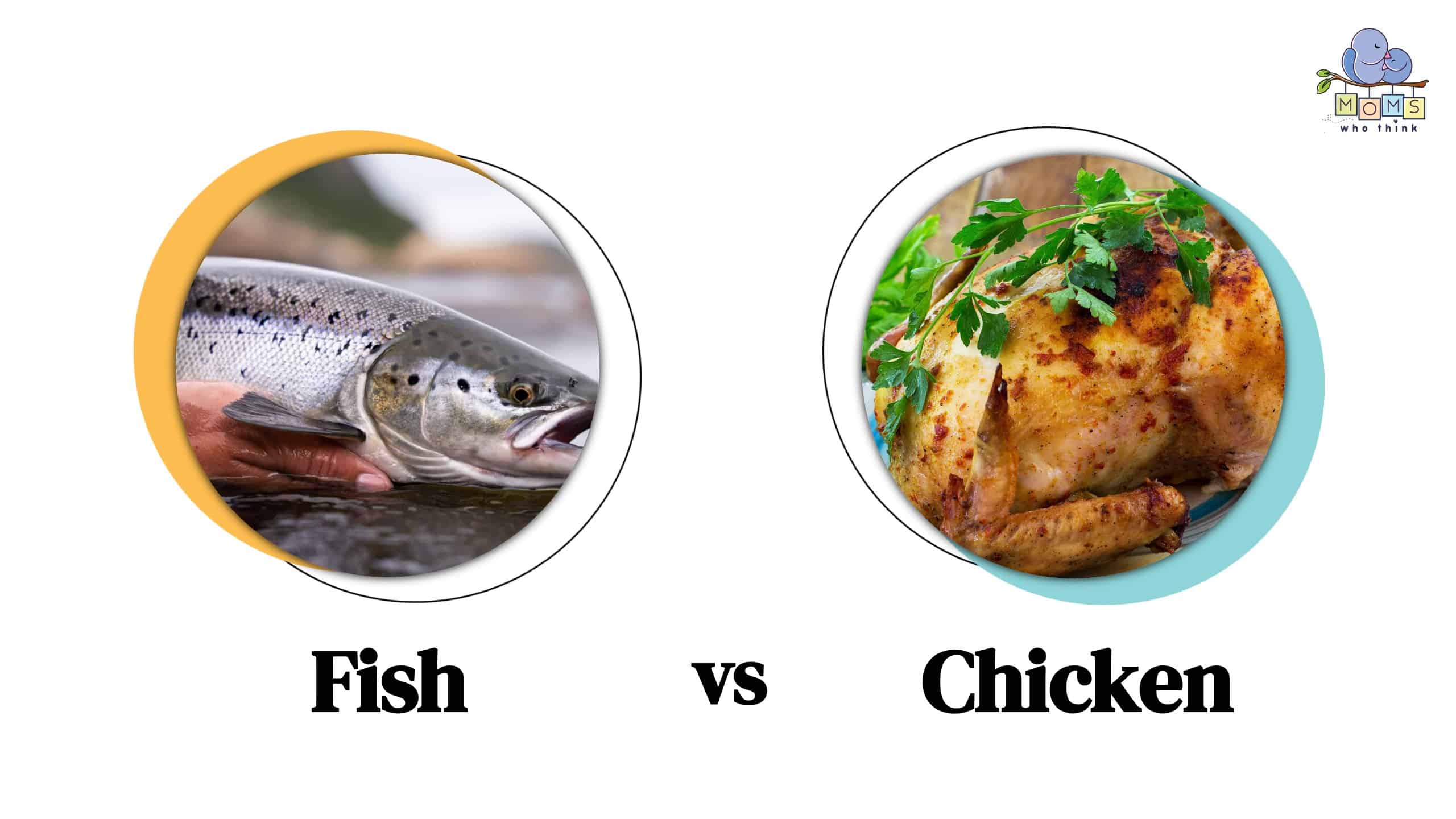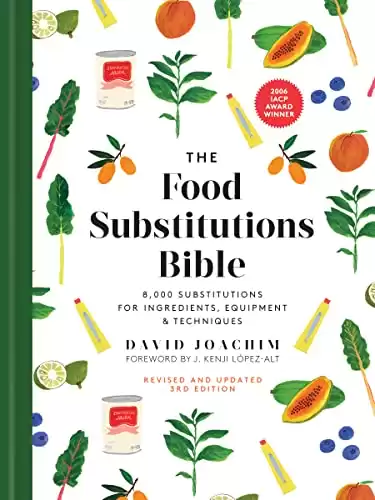When people think of healthy meats, most of the time, they immediately think of fish and chicken. This way of thinking is for an excellent reason. Both chicken and fish contain low fat and low calories and are excellent protein sources. They also provide plenty of nutritional value, including vitamins, minerals, and omega three fats. Fish is also affectionately called the chicken of the sea. With all of their similarities, their differences may get lost. However, did you know that both fish and chicken are full of plenty of differences? These differences include texture, taste, cooking methods, and grocery store prices. This post will cover these differences, which is better for your health, and the nutritional value of each of these meats. Read below for more.
- The must-have convenient reference guide for every home cook!
- Includes more than 8,000 substitutions for ingredients, cookware, and techniques.
- Save time and money on by avoiding trips to grab that "missing" ingredient you don't really need.
Fish vs. Chicken: What are the Differences?
The most apparent differences are the types of meat that fish and chicken are. Fish comes from the sea, and chicken is poultry raised on land. However, there are more differences that we will discuss.
The first difference is the taste and texture. Fish tends to be more tender than chicken. The tenderness differences are because they have fragile connective tissue and shorter muscle fibers. When eating fish, it will usually fall off the fork and have a very flaky texture.
Chicken tends to have a neutral taste. Also, because the flavor tends to be a little bland, chicken is excellent with different seasonings, sauces, and marinades. Fish, on the other hand, has a unique taste. The flavor typically depends on which type of fish you eat; however, it can be sweet and has a delicate buttery taste. On the other hand, the texture of the chicken is typically firm.
In addition, fish is crisp and soft because of the flakiness. It is more delicate than chicken and has a melt-in-your-mouth texture. This delicateness is because fish has less connective tissue and fats than chicken.
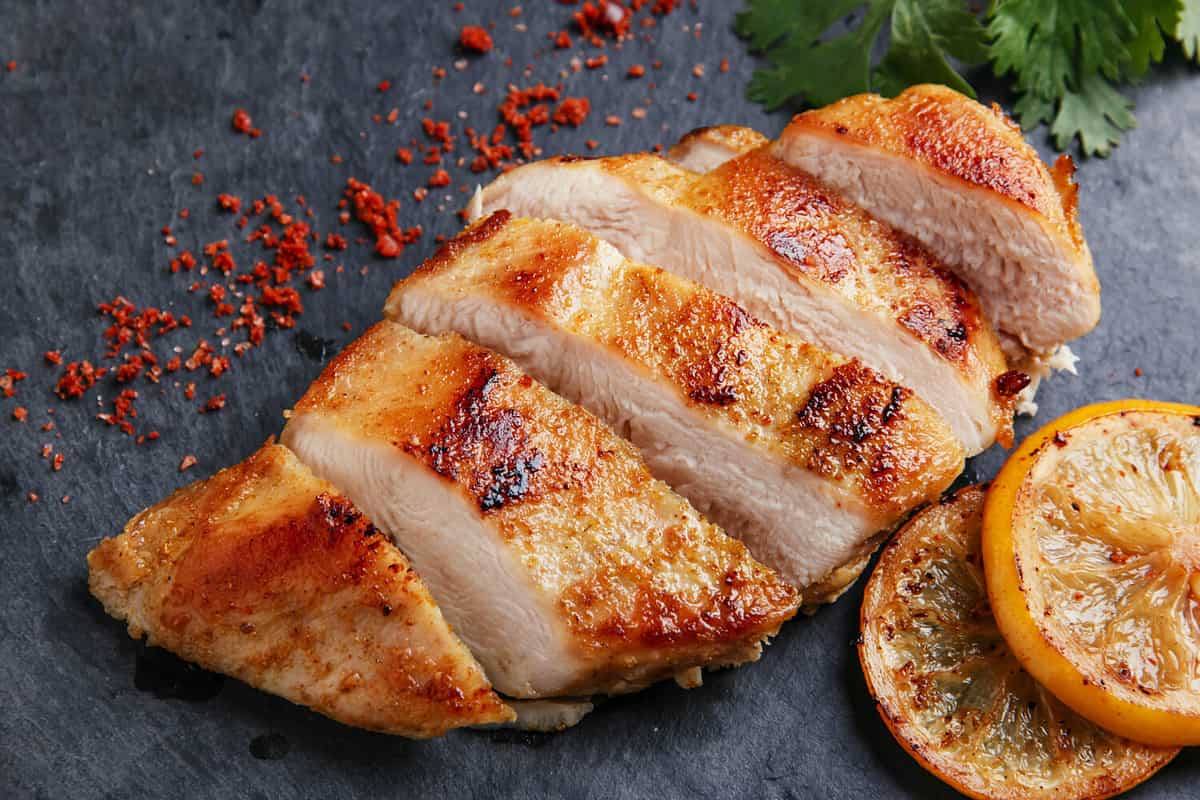
©koss13/Shutterstock.com
Cooking Methods
Another difference between chicken and fish is in the cooking methods of the two. Chicken takes more time to cook than fish. Most of the time, people will follow the direction that cooking fish should be for 10 minutes per inch of thickness. You will know the fish is done cooking when it flakes during a fork test. However, the ten-minute rule can be tossed out the window if you are cooking frozen fish or baking your fish in foil. Baking fish in foil takes longer. However, it will retain a tender and juicier taste.
On the other hand, there are many different ways to cook chicken. Many enjoy grilling, pan-frying, baking, or even air-frying their chicken. You will know your chicken is done when you stick a thermometer into the chicken, and it reads 165 degrees Fahrenheit. Be sure to insert the thermometer into the thickest part of the chicken! Also, try not to overcook your chicken; it becomes rubbery and tough when this happens.
Fish vs. Chicken Nutritional Value
Another of the main differences between chicken and fish is in the nutritional value of each. These meats contain protein, iron, zinc, and vitamin B12. In comparison, chicken includes more nutrients than fish. Although fish contains fewer calories than chicken, making it easier to eat more of this nutrient-packed meat. Take a look below at the incredible nutritional benefits that each offer.
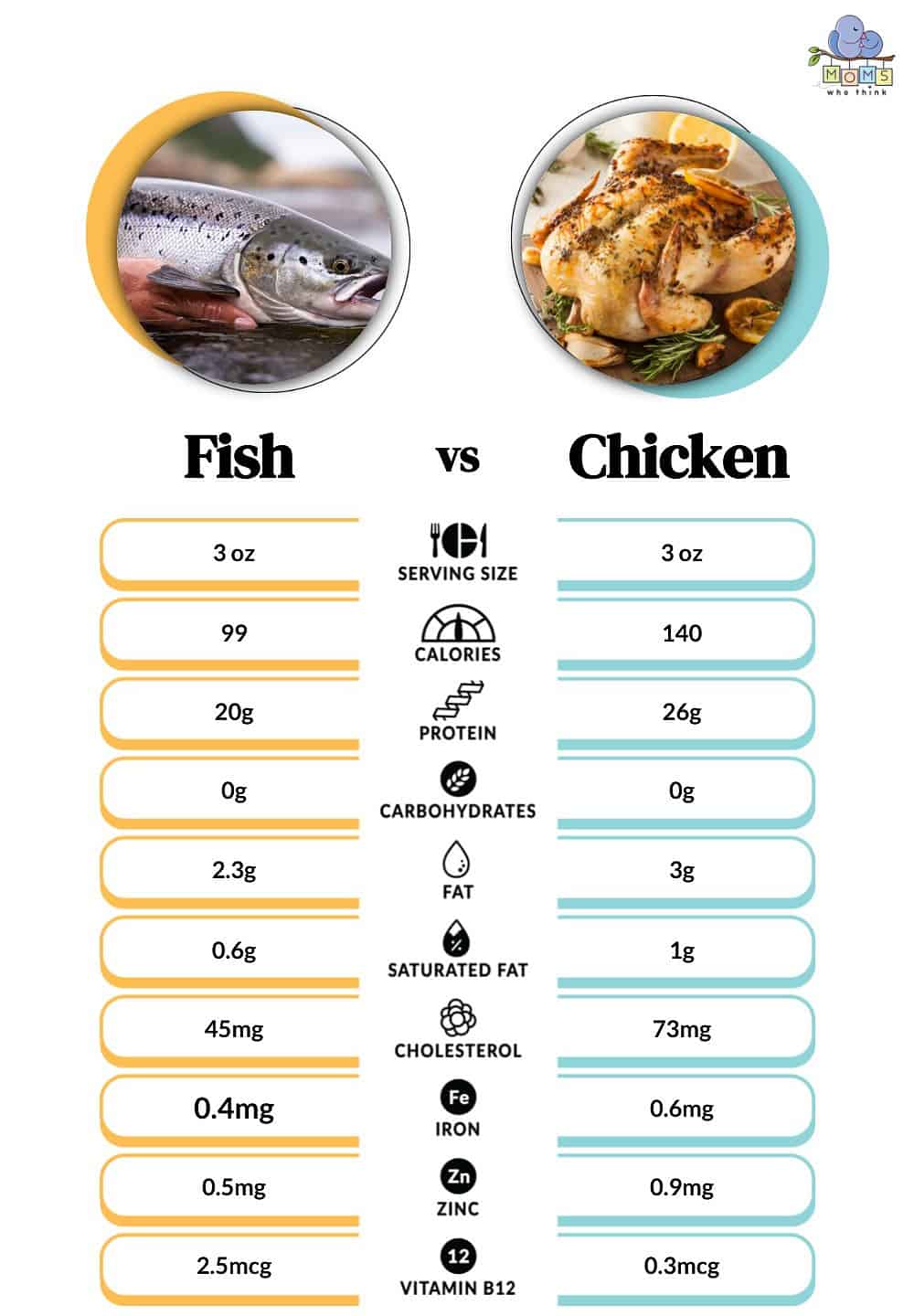
©
What is Fish?
Now that we have discussed the differences between fish and chicken, let us look at each. What exactly is fish? Fish is a category that many sea animals are placed in. Different types of fish include tuna, catfish, Atlantic cod, Nothern pike, salmon, and many more. There are an estimated over 20,000 fish species! When defining a fish, scientists have sometimes disagreed. However, different terms that describe fish are as follows:
- Fish are poikilothermic. The classification of a poikilothermic means they can adjust their temperature to the outside temperature. Being cold blood is another way to say that a fish is poikilothermic.
- Fish are also aquatic. Being aquatic means they live in water.
- They have gills and scales.
- Fish can have flat and moveable fins, although not all have fins.
- The must-have convenient reference guide for every home cook!
- Includes more than 8,000 substitutions for ingredients, cookware, and techniques.
- Save time and money on by avoiding trips to grab that "missing" ingredient you don't really need.
What is Chicken?
Now, what exactly is a chicken? Chicken is poultry that many people raise on farms. Many people raise chickens for a variety of reasons. First, they provide an excellent meat source with outstanding nutritional value, including protein. People also love chickens for the eggs they produce, which contain protein too! However, there are more reasons chickens are extraordinary. Did you know they are fantastic at keeping bugs off your lawn and garden? Chickens can also compete in contests, which is fun to watch!
Chickens are birds. One of the defining characteristics of a bird is the feathers they have instead of hair or fur. Chickens can fly, albeit they are not very good at it! Many people like to keep chickens as pets for many reasons stated earlier.
Can You Substitute Fish for Chicken?
When it comes to our health, sometimes we have a preferred taste. While fish and chicken are excellent sources of nutrients, not everyone likes one or the other. That leads to the question, can you substitute fish and chicken for the other? Yes, there are many different ways to substitute chicken and fish. The most important thing you will need to pay attention to is the cooking time of your recipe. Fish takes less amount of time to cook than chicken. With this in mind, you can replace one for the other, still receive fantastic health benefits, and have a filling meal!
What are Substitutes for Fish?
If you want the same benefits that fish offers yet aren't a fan of the taste or fish in general, don't worry! There are plenty of substitutes that you can try. For example, try tofu and jackfruit if you want something similar in texture. On the other hand, if you enjoy the taste of fish, try adding soy sauce, mushroom, or seaweed to your meal. Do not be afraid to experiment!
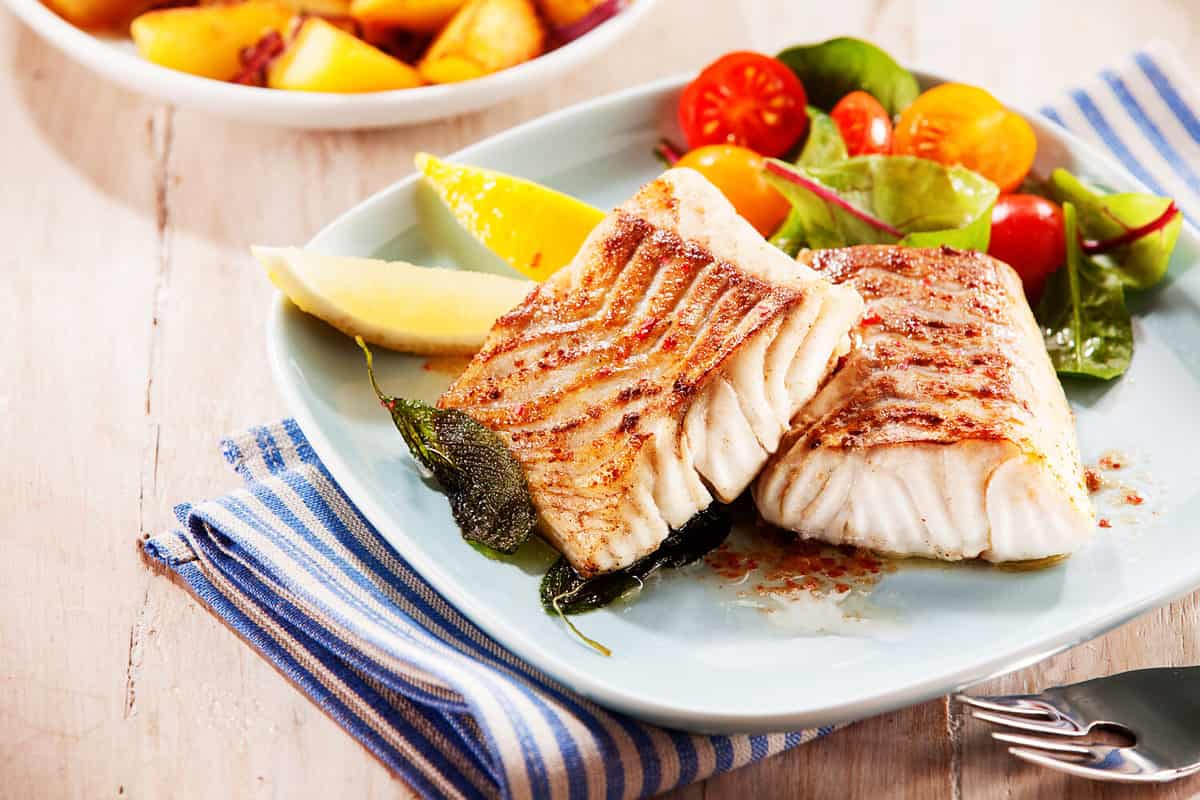
©stockcreations/Shutterstock.com
What are Substitutes for Chicken?
Additionally, if you are not a chicken fan or want to change your dinner options, there are great substitutes to try. Ground turkey and lean beef are fantastic alternatives that still provide the excellent nutrients that chicken does. Lentils, beans, nuts, and tofu, are also beneficial and can be a tasty substitute for using chicken in your meal. There are many ways to get the same benefits that fish and chicken provide while spicing up your meals!
In Conclusion
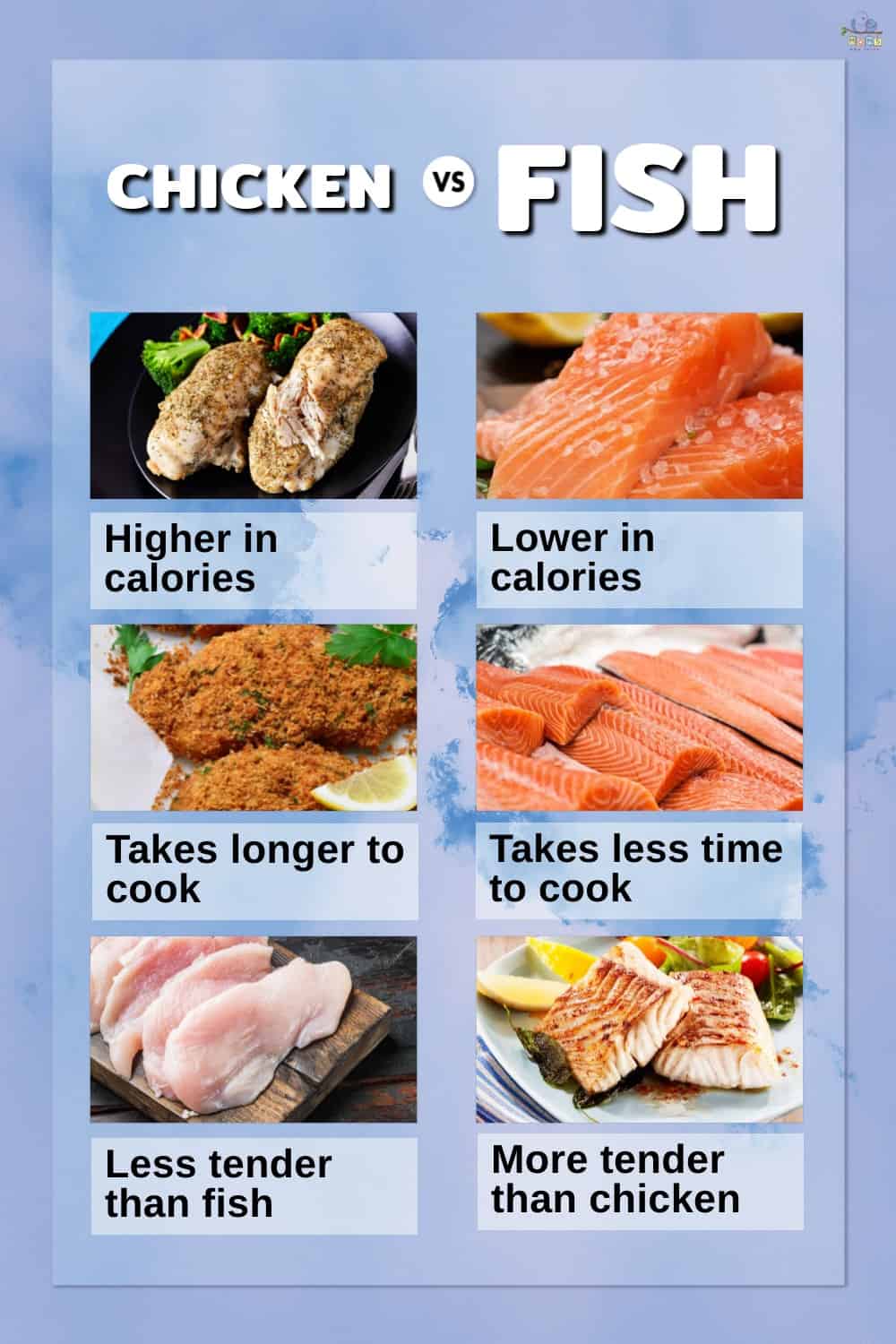
- Chicken is higher in calories compared to fish, although both are healthy options for most.
- Fish takes less time to cook than chicken, making it a great choice for a busy night.
- Chicken is less tender than fish; if you're looking for the pinnacle of tenderness, a good fish is the way to go.
Both fish and chicken contain nutrients, including iron, protein, and B12. The one that offers more nutrients would be chicken; however, not by much! You can cook chicken and fish in various ways, like grilling, baking, pan-frying, and even air-frying. Of course, the two have fundamental differences, including the taste, texture, and cooking time each requires. However, both of these meats offer a variety of essential nutrients, are bursting with flavor, and can be very versatile. Feel free to try a new sauce or unique seasoning on either one!
- The must-have convenient reference guide for every home cook!
- Includes more than 8,000 substitutions for ingredients, cookware, and techniques.
- Save time and money on by avoiding trips to grab that "missing" ingredient you don't really need.
Great Chicken and Fish Recipes
Print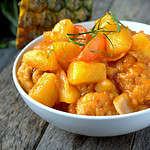
Slow-Cooked Honey Pineapple Chicken
- Yield: 8 servings 1x
Ingredients
2 pounds boneless skinless chicken breast halves
2 Tablespoons canola oil
1 can (8 ounces) unsweetened crushed pineapple, undrained
1 cup packed brown sugar
½ cup honey
⅓ cup lemon juice
¼ cup butter, melted
2 Tablespoons prepared mustard
2 teaspoons reduced sodium soy sauce
Instructions
1. In a large skillet, brown chicken in oil in batches on both sides; transfer to a 5 qt. slow cooker.
2. In a small bowl, combine the remaining ingredients; pour over chicken.
3. Cover and cook on low for 3 to 4 hours or until meat is tender. Strain cooking liquid, reserving pineapple. Serve pineapple with the chicken.
Nutrition
- Serving Size: 1 serving
- Calories: 302
- Sodium: 180mg
- Fat: 9g
- Saturated Fat: 3g
- Carbohydrates: 33g
- Protein: 23g
- Cholesterol: 73mg
- Baked Mozzarella Fish Recipe
- Healthy Meatless and Seafood Dinner Recipes
- Creamy Fish and Clam Chowder Recipe
- Freezer Cooking Dump and Go Chicken
- Quick and Easy 30-Minute Chicken Meals Recipe
- Coconut-Crusted Chicken Strips Recipe
